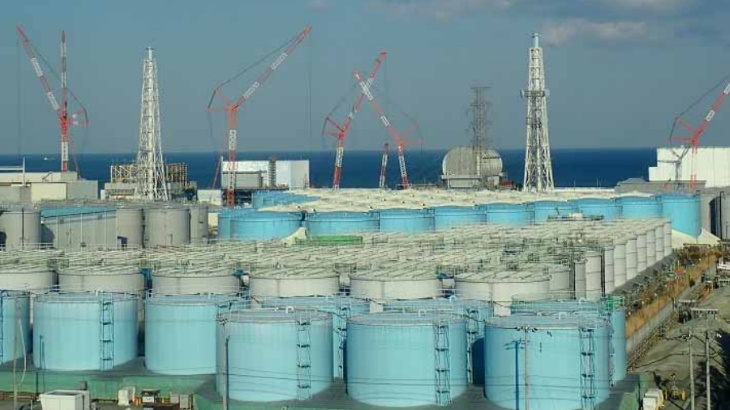Undersea tunnel to discharge Fukushima Daiichi water
Tokyo Electric Power Company (Tepco) has announced plans for the construction of an undersea tunnel, about 1 kilometre in length, for the discharge of treated water currently stored at the damaged Fukushima Daiichi nuclear power plant. The tunnel will release the tritiated water into an area of the ocean away from the plant but where no fishing rights are in place.

Tanks of treated water at the Fukushima Daiichi site (Image: Tepco)
At the Fukushima Daiichi site, contaminated water is treated by the Advanced Liquid Processing System (ALPS), which removes most of the radioactive contamination, with the exception of tritium. This treated water is currently stored in tanks on-site. The total tank storage capacity amounts to about 1.37 million cubic metres and all the tanks are expected to be full around the summer of 2022.
In April, the Japanese government announced its formal decision that the treated water stored at the Fukushima Daiichi site will be discharged into the sea. The basic policy calls for the ALPS-treated water to be discharged "on the condition that full compliance with the laws and regulations is observed, and measures to minimise adverse impacts on reputation are thoroughly implemented". Japan intends to start releasing the treated water around spring of 2023, and the entire operation could last for decades.
According to Japan's announced policy, the tritium will be diluted to 1500 becquerels per litre, which is one-fortieth of the concentration permitted under Japanese safety standards and one-seventh of the World Health Organisation's guideline for drinking water.
ALPS treated water will be diluted using seawater from outside the plant's harbour to avoid the impact of radioactive material in the harbour, according to a plan released by Tepco yesterday. This diluted water will then be discharged via an undersea tunnel dug through bed-rock to prevent discharged water from recirculating into the seawater taken in.
Drilling of the tunnel - about 2.5 m in diameter, 1 km in length and lying 12 m below sea level - would commence near unit 5 of the Fukushima Daiichi plant, Tepco said.
The company plans to apply to the Nuclear Regulation Authority for a review of the tunnel construction plan and begin preparatory work in the near future. It plans to start full-scale construction in early 2022, with the discharge of treated water beginning around spring 2023, in line with government policy.
Tepco said details for the undersea tunnel will be reviewed after conducting a sea boring survey.
The direct release of the water from within the plant site has also been considered by Tepco to reduce construction work. However, it said the dispersal of tritium remained a key concern. The company said it will increase the sampling locations and frequency of tritium concentration measurements in the area surrounding the plant.
The International Atomic Energy Agency has agreed to provide technical support in monitoring and reviewing Japan's safe and transparent implementation of its plan to discharge the treated water to sea.
Researched and written by World Nuclear News
- China Institute of Atomic Energy
- Nuclear Power Institute of China
- Southwestern Institute of Physics
- China Nuclear Power Operation Technology Corporation, Ltd.
- China Nuclear Power Engineering Co., Ltd.
- China Institute for Radiation Protection
- Beijing Research Institute of Uranium Geology (BRIUG)
- China Institute of Nuclear Industry Strategy (CINIS)
- China Nuclear Mining Science and Technology Corporation


